The centre of attention
Manitoba is situated bang-on the longitudinal centre of Canada and, in its 649,950 square-kilometres, hosts more than 100,000 lakes, rivers and streams, along with more than 90 parks (including two national parks). As well as a variety of landscapes (from vast prairies to subarctic coastline) and one of Canada’s most amazing capital cities – that’d be Winnipeg – the 1.2 million people in this province includes a vibrant Indigenous culture, and an equally vibrant (and unforgettable) wildlife population; polar bears, wolves, beluga whales, bison and loads more roam free here. In short, for those who are after an escape that combines all that the adventurous traveller loves – plenty of outdoor activities, culture, history (both ancient and more recent), wildlife and an incredible sense of wide open space – Manitoba is your answer. How much Manitoba offers you will depend on how long you have. A week or two will offer a nice taste (and a million reasons to return), while even a year may not be enough. Here’s why…
The only way to go
Sure, you can fly to Winnipeg from Vancouver (the entry point for Aussie travellers visiting Canada), but there is a far more enjoyable and enriching way to visit Manitoba, and it only takes a few days…
It is a journey like no other: the rugged ramparts of the Rocky Mountains passing by your window, the valleys and rivers of Canada’s interior rolling by as you continue into prairie country and reach Winnipeg, Manitoba’s vibrant capital, nestled at the junction of two mighty rivers. Then, you’re moving again – north, this time – and toward a spectacular landscape that offers everything from nature’s greatest lightshow to the chance to see some of Canada’s most iconic wildlife.
We’re talking about The Canadian, Canada’s famous two-night/three-day VIA Rail sleeper train journey from Vancouver, BC, on Canada’s west coast, to Manitoba’s capital of Winnipeg, and then another famous rail journey (on a different two day/two night service) to Churchill, and a rendezvous with polar bears, beluga whales and the magical Northern Lights (more on all this later) on the western shore of mighty Hudson Bay. Combining what is still regarded as one of the finest ways to travel (by rail), with the opportunity to understand, through the landscapes you roll past, how Manitoba ‘fits’ into Canada, and then travel north to the subarctic wilderness, this journey has no equal.
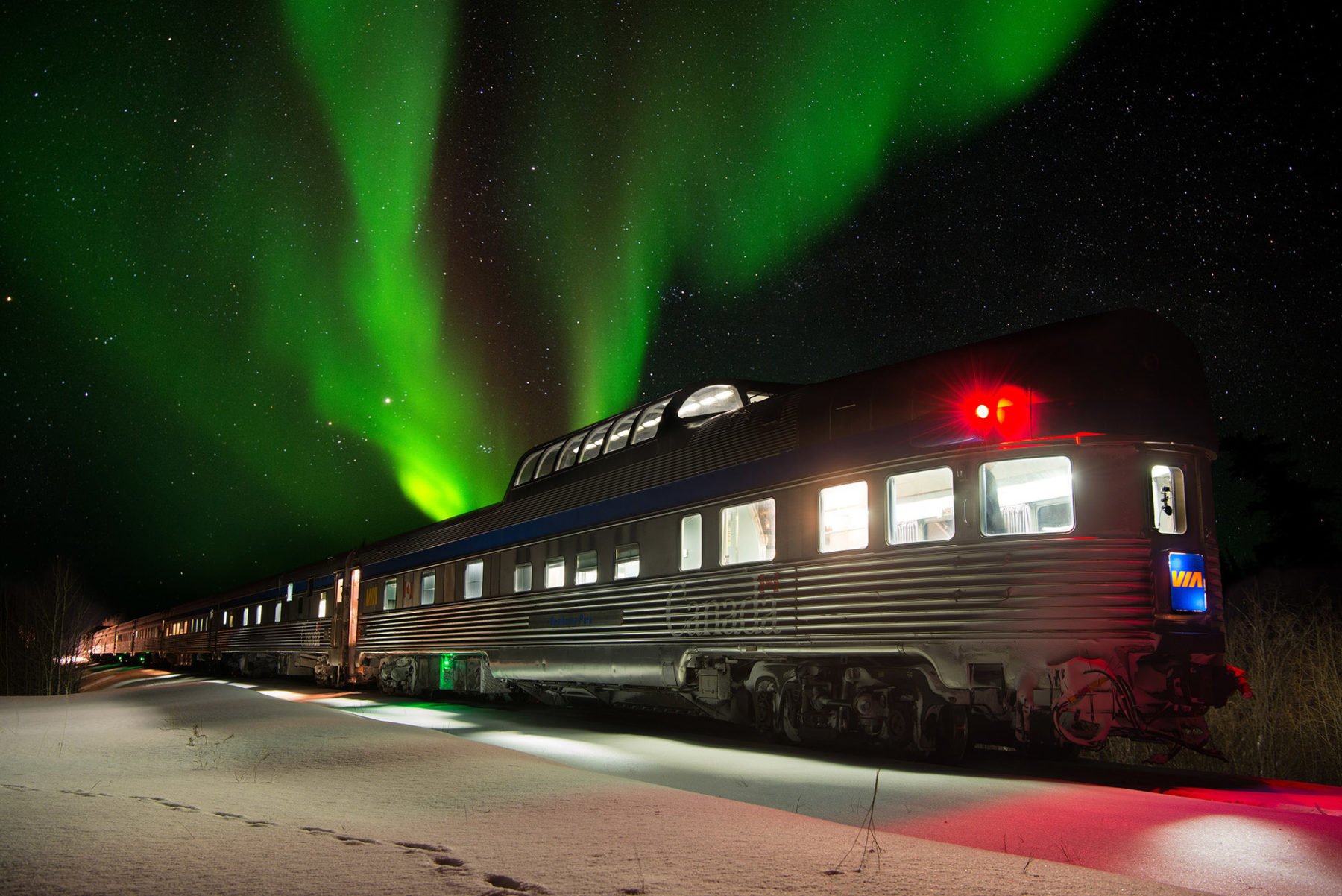
The Canadian is part of the country’s transcontinental service (it continues on to Toronto). Of course, it’s about the journey but the train itself is brilliant, too, with each car (except the dining and sleeping cars) featuring an expansive dome-glassed upper level viewing area that provides a 180-degree view of your surrounds. All cars also now have upgraded aircon filtration, too.
There are three ticket classes – Economy, Sleeper Plus and Prestige – with the Sleeper Plus class including a private cabin and all meals, while Prestige including a private cabin for two and your own concierge (plus meals and alcohol). If you opt for either of these two classes you also gain access to the Skyline Activity cars and the Prestige Park car’s bar and lounge, as well as the Dining car. Each car – regardless of class – offers great views; we can’t think of anything better than waking up to a snow-draped landscape rolling past your cabin window.
A capital idea
Spending more than a few days in Winnipeg is a no-brainer: the capital of Manitoba is a thriving, bustling centre of around 750,000 people and it is filled with a rich mix of cultural and adventurous activities, whether visiting the city’s famous museums and eateries, or exploring some of the surrounding parks. For those with an outdoor bent, we’d suggest The Forks. This appropriately named area of Winnipeg sits at the junction of the Assiniboine and Red rivers and includes murals (painted by Indigenous artists), awesome restaurants and you can even take to the river on a boat tour. Of course, if you’re in the city in winter, ice skating is a great family-based adventure in the city, with the Winnipeg Foundation Centennial Trail, the world’s longest naturally frozen skating trail.

For those looking for cultural enrichment, it’s hard to go past Qaumajuq, a centre that houses the world’s largest collection of contemporary Inuit art (it is found inside the magical Winnipeg Art Gallery). The term ‘Qaumajuq’ translates as “it is bright, it is lit” in Inuktitut. Two museums are must-visits as well, covering entirely different subjects, with the Canadian Museum for Human Rights housing ten interactive galleries, while the Manitoba Museum is jam-packed with displays and exhibits that cover the province’s cultural and natural history. There’s even a life-sized replica of a fur trade vessel here! And speaking of the fur trade, the Hudson’s Bay Company Gallery, inside the museum, is not to be missed, covering more than three centuries of what is claimed to be one of the world’s oldest commercial enterprises. After all that education, you’ll be hungry no doubt and Winnipeg has you covered with a variety of cafes, restaurants, bars offering immeasurable options, so be sure to check out districts such as The Forks, The Exchange (also the location of North America’s largest collection of heritage buildings) and Hargrave Street Market, among others.
Where life is wild
Think Manitoba and polar bears instantly spring to mind, with good reason; being able to see these mighty bruins up close at Churchill in the far north is a definite highlight for any visitor and most certainly one of the province’s biggest drawcards. However, these big boppers are not the only reason wildlife lovers should consider exploring Manitoba’s wilder side: the curious – okay, and cute – beluga whales are another, and then there’s bison, wolves, innumerable bird species (Manitoba is situated within three bird migration corridors), caribou, moose, black bears, seals and Arctic fox, to name just a few, that populate the provincial landscapes.
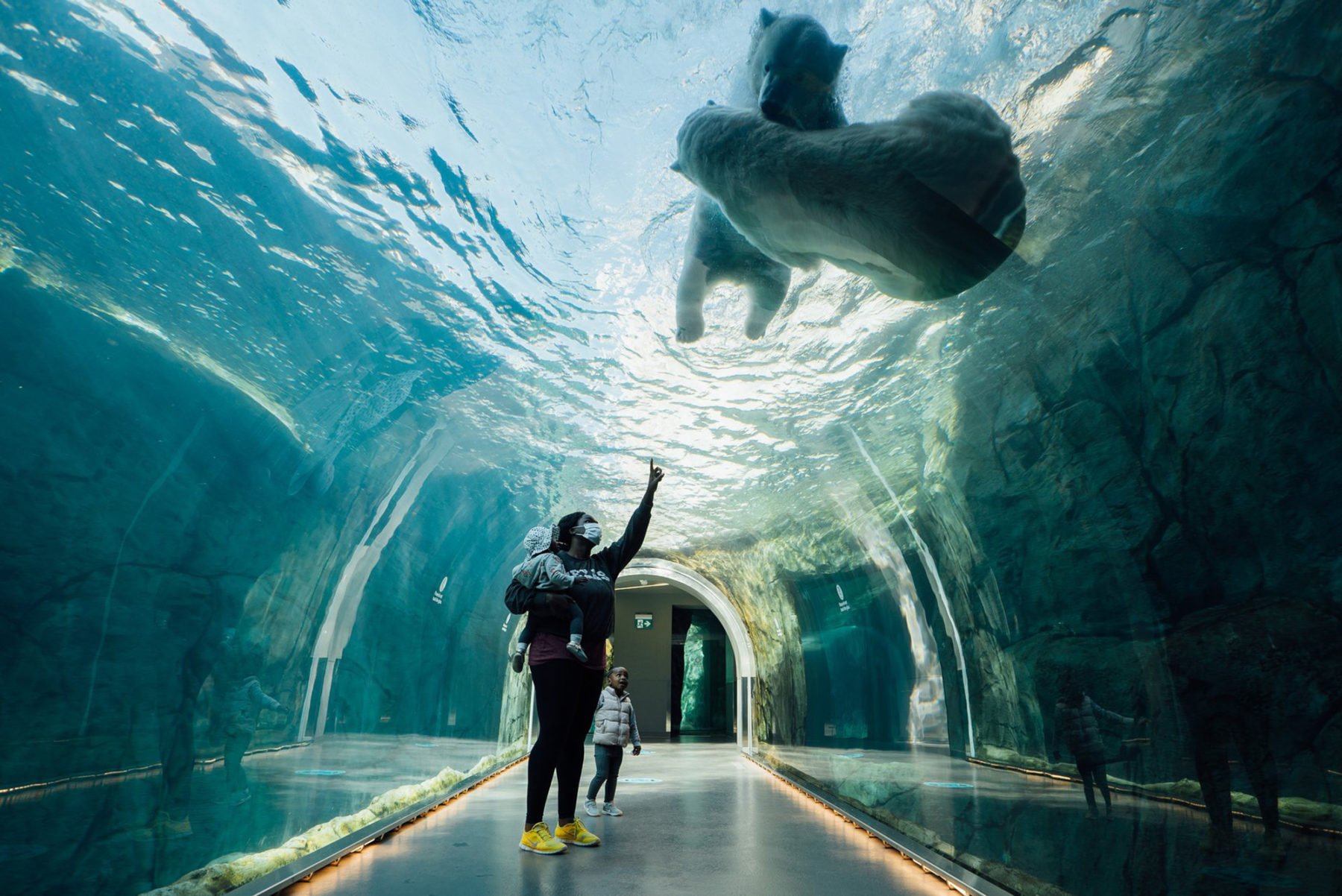
Assiniboine Park Zoo, in Winnipeg, has some brilliant wildlife exhibitions, including this underwater viewing tunnel. 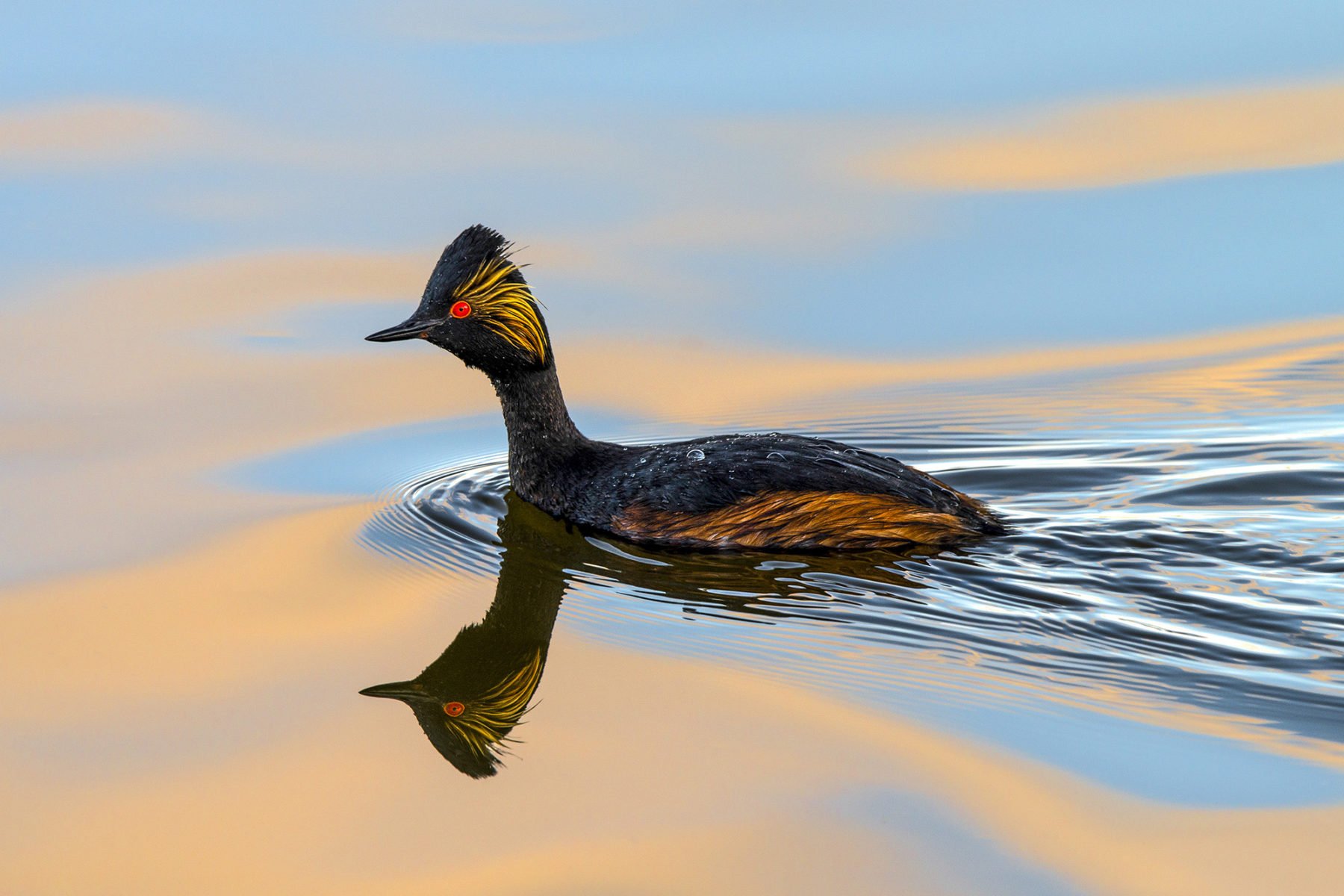
The colourful eared grebe is just one of hundreds of bird species that are found in Manitoba. The province is a birdwatcher’s paradise.
For birders, the 36-square-kilometre Oak Hammock Marsh Wildlife Management Area, around 20km north of Winnipeg, sees 300 bird species, with the number of waterfowl topping 100,00 per day during their migratory season. The Harry J. Enns Wetland Discovery Centre, located in the management area, offers a range of educational programs throughout the year. Visit Manitoba in the autumn and you’ll see tens of thousands of migrating Canadian geese, as well.
For those who can’t make it to Churchill, you can still tackle a polar bear experience at Winnipeg’s excellent Assiniboine Park Zoo, which contains a number of Arctic species, such as polar bears (of course – and in an expansive enclosure that accurately replicates their natural habitat), wolves, muskox and plenty with its various exhibits. This includes Journey to Churchill (with aforementioned polar bears), Gateway to the Arctic (complete with underwater viewing tunnels) and the Leatherdale International Polar Bear Conservation Centre (LIPBCC) where you will learn about the life – and climate-influenced challenges – of the polar bears (and other species) and the Arctic ecosystem in which they reside. Viewing the wildlife here at this excellent zoo is a highlight of a visit to Manitoba, and there’s an even more immersive experience a few days’ train travel north, too…
Northern exposure
Churchill, population around 900, is known as the ‘polar bear capital of the world’, due to its location on the shores of Hudson Bay, and the bears’ gathering there as they wait for the bay to freeze over so they can then hunt seals while living on the sea ice. For optimum viewing of these majestic animals, the middle of October until mid/late November is the best time to see some of the estimated 1000 bears that make up the area’s polar bear population.
There are a number of ways in which to view the bears, from one-day adventures in big tundra vehicles (Lazy Bear Expeditions, Frontiers North Adventures and Great White Bear Adventures all offer these), to multi-day stays at some amazing wilderness lodges.
For something truly unique, you can experience a few days aboard a tundra lodge stay, with operators such as Frontiers North Adventures and Great White Bear tours. This comprises huge tundra vehicles joined together, with separate cars for sleeping quarters and dining, along with the viewing. Fly-in wilderness lodges, such as Seal River Heritage Lodge, The Lazy Bear Lodge and Nanuk Polar Bear Lodge, are brilliant, too, and some allow you to join polar bear hikes, where you are down on the bear’s level, with guides (known as ‘bear whisperers’) who ensure you get close (but not too close) and you don’t impact the bears’ natural behaviour in any way. Add in the chance to see other wildlife, such as moose, black bears and wolves, and it’s easy to see why these wilderness lodges are so incredibly popular.
Summer allows some bear viewing (although they are rarer) and it also means you can paddle the now unfrozen waters of the Churchill River estuary to spot the super-cute beluga whales (known as the ‘canaries of the sea’ due to their calls), who spend time there feeding and breeding. There is an estimated 58,000 beluga that call Hudson Bay home each year, and around 4000 will spend time in the Churchill River estuary. You can kayak, sit aboard a boat or take a SUP out into the estuary to view the beluga (Lazy Bear Expeditions, Frontiers North Adventures and Sea North Tours offer beluga viewing trips). Besides their unique ‘song’ and curious personality, beluga differ from other whales by not having fused neck vertebrae, allowing the whale to tilt its head to the side, leading to some cheeky glances at you in your kayak or boat as they glide past.
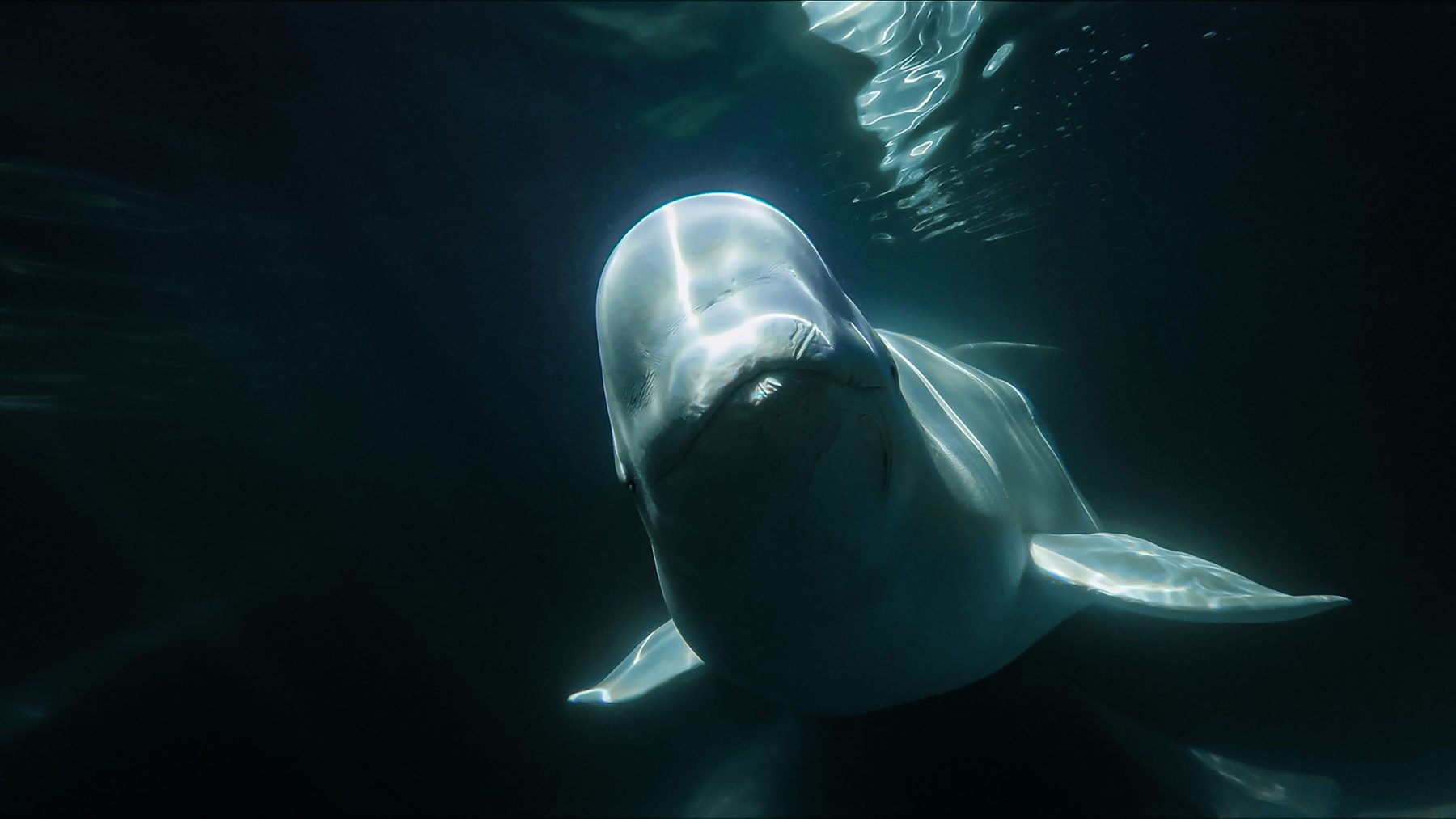
The curious beluga whales spend time in the Churchill River estuary in the northern summer, making for excellent up-close viewing of these ‘canaries of the sea’. 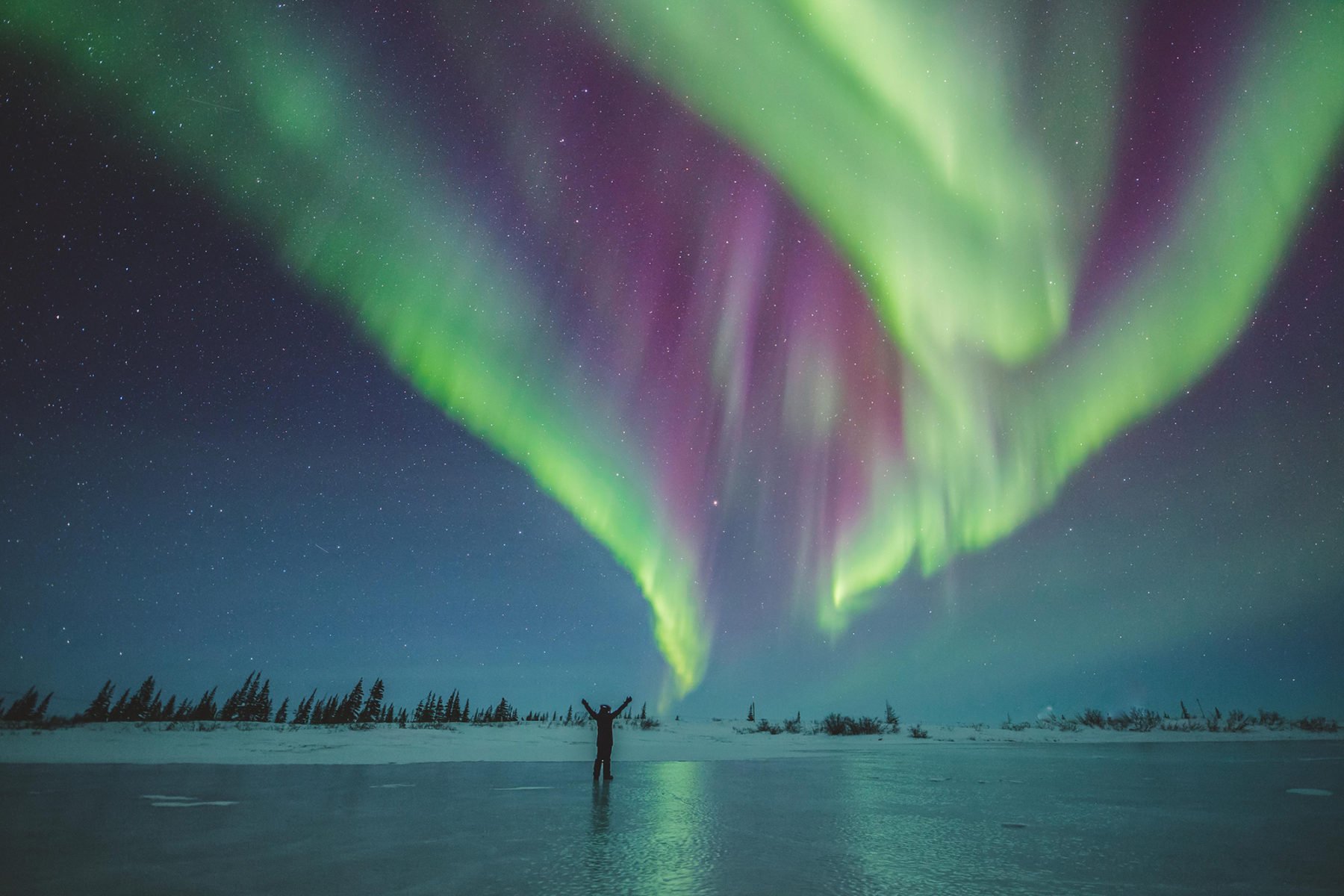
The Northern Lights can be viewed in Churchill for close to 300 nights of the year, due to the town’s far north location.
There’s a third, close to equally famous, natural resident of Manitoba that is a must-see: the Northern Lights, aka Aurora Borealis. The northern icon of Churchill is, again, the place to be for optimum Northern Lights viewing, with the peak season of February and March. You can see the famous dancing lights throughout Manitoba during certain times of the year as well, but with its northerly location, Churchill provides close to 300 nights of Northern Lights viewing. Yep, that’s impressive.
Manitoba equals adventure, every day of the year
Hiking, canoeing, camping, snowshoeing, dogsledding, fishing, bike- and horse-riding – you name the outdoor adventure and Manitoba can provide the adrenalin- and nature-infused answer.
The 2729 square-kilometre Whiteshell Provincial Park, around 1.5 hours east of Winnipeg, contains numerous lakes and rivers as well as a huge network of hiking and biking trails that traverse ruggedly spectacular Canadian Shield country (this is a massive area of exposed rock that is part of the geologic core of the North American continent), with plenty of accommodation options for adventurous travellers, ranging from campgrounds through to resort-style. For hikers, the Hunt Lake Trail is challenging but with excellent lake views as the reward. Another absolute belter is the Assinboine Park Loop that not only gives your kids a chance to observe the zoo’s native wildlife at the animals inside but follows the river of the same name for a little while (oh, and there’s a playground along the way. Winning!).
One of Manitoba’s most popular outdoor playgrounds is Riding Mountain National Park, in what is known as ‘Clear Lake Country’ (after a lake in the national park) with some excellent biking trails (even in winter you can fat-bike here) and close to 370km of hiking trails. Hike options include the Gorge Creek Trail and an ascent of Bald Hill (the views from the top are brilliant), plus the Brule Trail, which is great for families at just on an hour walking through native forest. For wildlife spotters, the park is home to 40 plains bison.
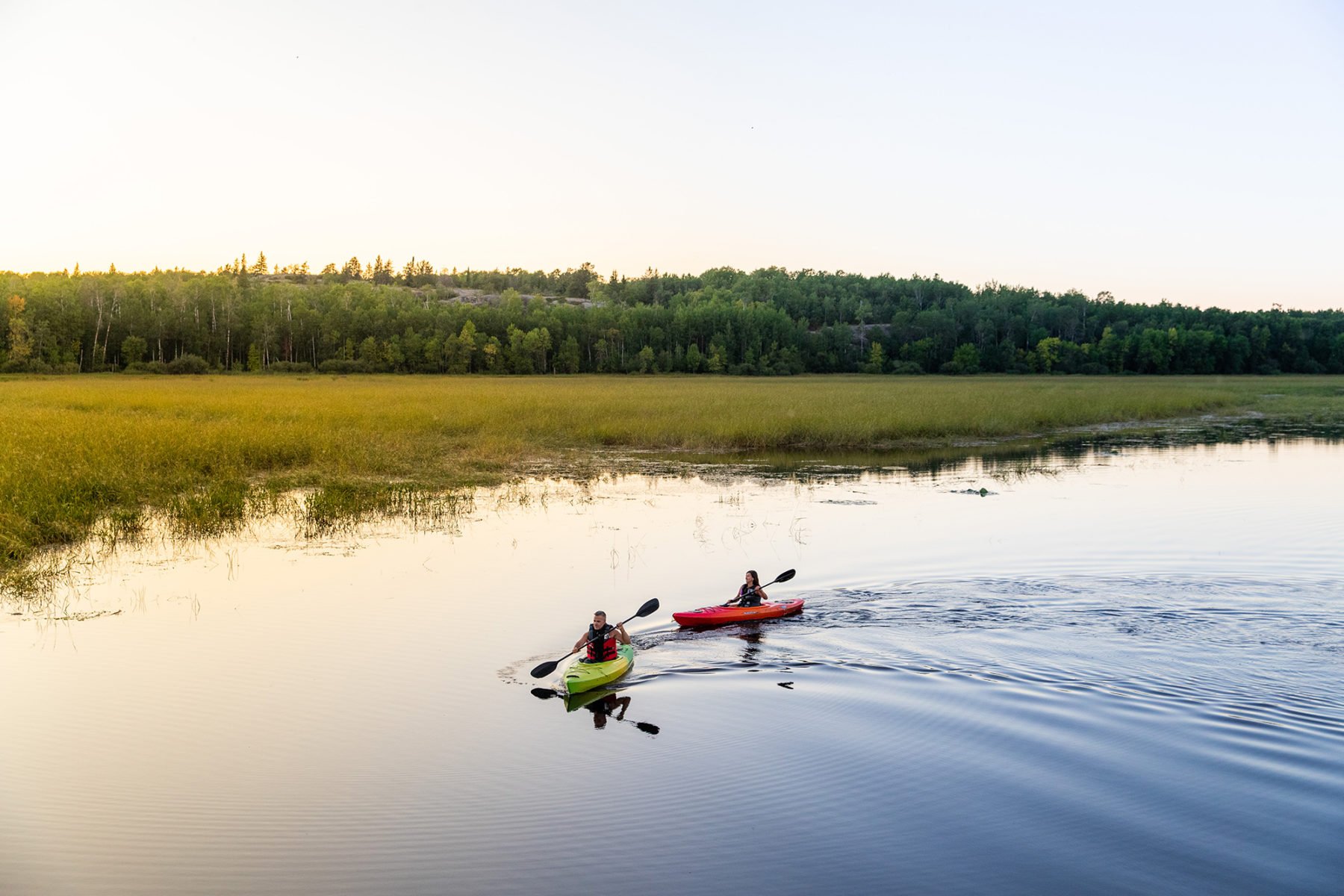
Whiteshell Provincial Park contains numerous waterways suited to any type of paddling adventures. 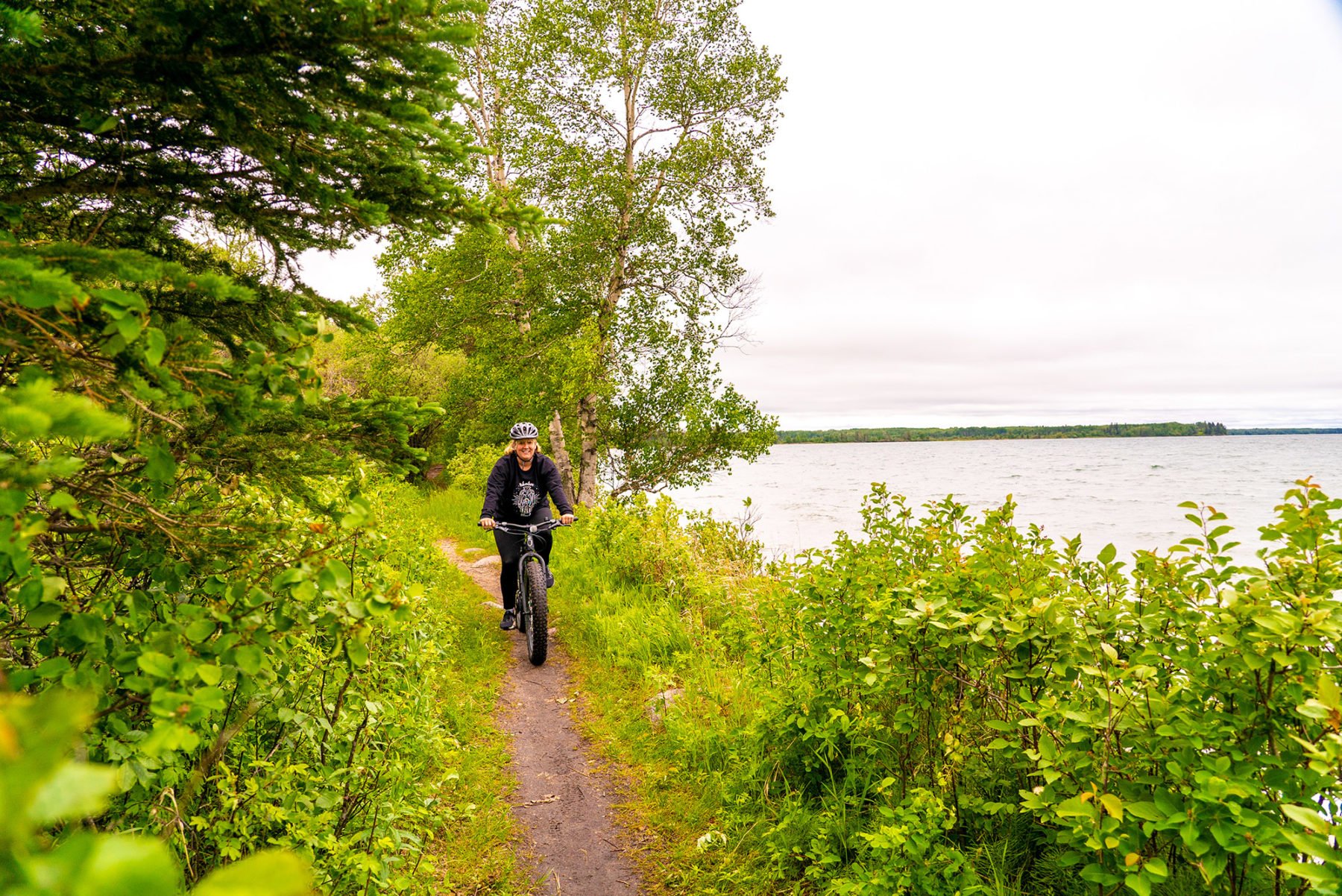
Riding Mountain National Park provides close to 370km of hiking trails and loads of bike trails as well.
With more than 100,000 lakes and waterways in Manitoba, those who love paddling a canoe are most certainly spoilt for choice, with myriad trips of varying lengths helping you connect with a watercraft that is synonymous with Canada. A few standout canoe journeys include five days or so along the Manigotagan River (roughly 150km northeast of Winnipeg) as it flows into pristine Lake Winnipeg, ideal for those who’ve paddled whitewater before (the river has a number of Grade I and II rapids, plus one Grade III) and with the chance to spot beaver, as well. For family paddlers, you can throw the kids in a canoe and explore the more benign (but just as beautiful) Seagrim Lake Chain, in Nopiming Provincial Park, over a weekend. For the true hardcore paddler, the Seal River beckons with its floatplane-only access to the start (and finish) and an estimated timeframe of three weeks journeying through a landscape interrupted by some small canyon sections, plus long lines of rapids, before you reach the flatter terrain as you get closer to the end-point of Hudson Bay (and 20km further along the bay, the polar bear town of Churchill itself).
Of course, don’t forget Winnipeg sits at the junction of two major rivers (and there are other rivers nearby), meaning there’s no excuse not to jump in a canoe or kayak and explore the city from the water!
All this Manitoba adventure doesn’t stop in winter, either, with dogsledding, fat biking, snowmobiling, ice fishing and snowshoeing just some examples of how you can tackle all types of active exploration and experiences in this fascinating province all year round.
All you need to know for the ultimate Manitoba adventure
For all things Manitoba, see www.travelmanitoba.com Insta: #exploremb
Winnipeg is excellent and well worth a few days’ stopover. See www.travelmanitoba.com/places/winnipeg for all info.
Churchill Is where it’s at for wildlife and the Northern Lights. See www.travelmanitoba.com/churchill/
For more info on VIA Rail’s awesome journeys, see www.viarail.ca or this cool video: https://youtu.be/Nc5nQAdVH78
Air Canada has direct flights from the eastern seaboard capitals of Sydney, Melbourne and Brisbane to Vancouver, with connecting flights to Winnipeg. (We’d still recommend – if you have the time – to jump on board The Canadian rail trip for that connection.)


